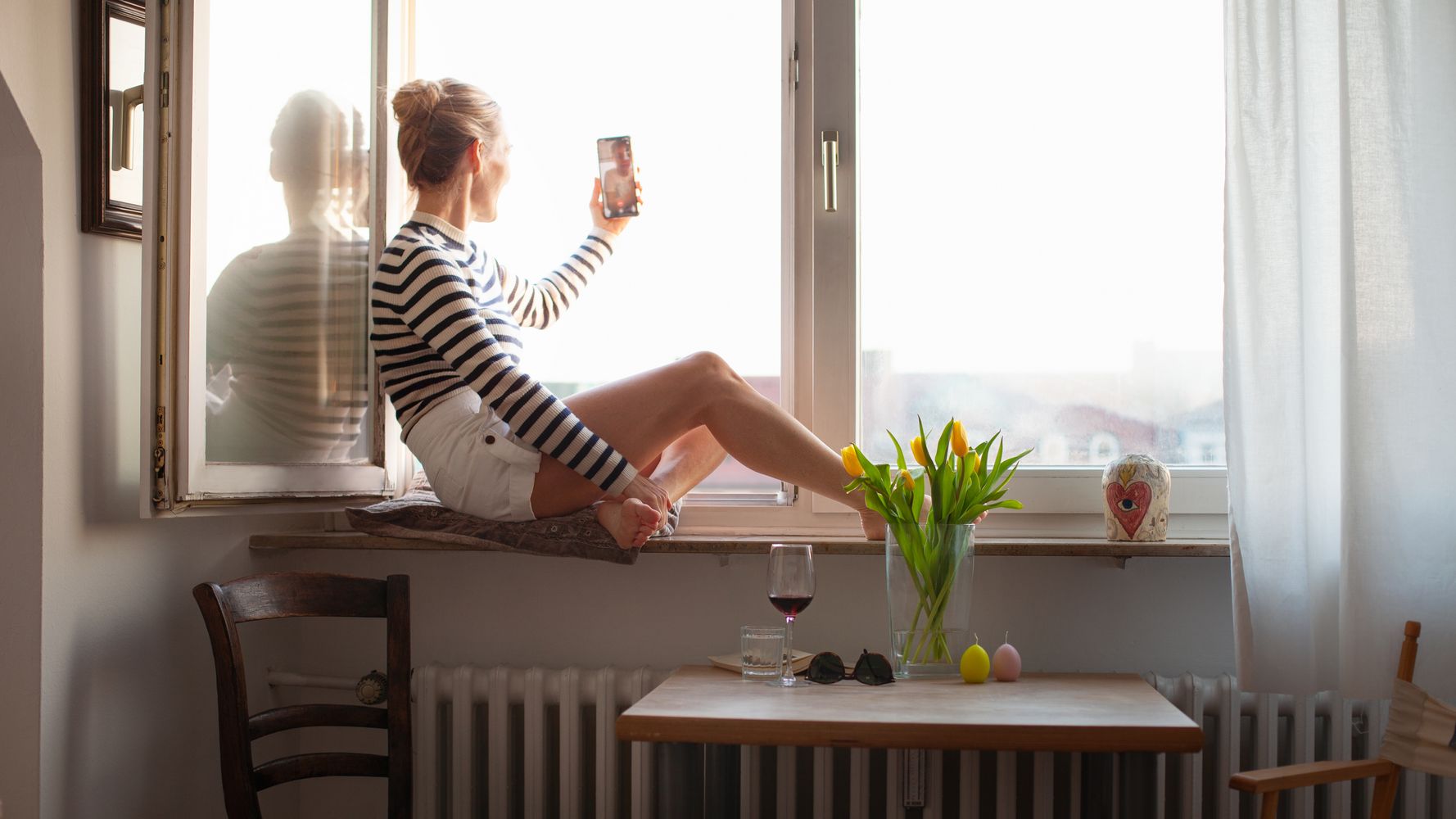To say the past year has been mentally challenging would be the understatement of the century. Our living arrangements, intimate relationships and working patterns – three areas of our lives that have a huge bearing on our psychological stability – have all changed, leaving us anxious and overwhelmed.
As we ease out of the pandemic, some will welcome the freedom with open arms, while others will find it a time of great stress. Psychotherapist Keeley Taverner has seen an increasing number of people with signs of what she calls “post-lockdown anxiety” (some might know it as re-entry anxiety).
“Feelings of anxiety around lockdown restrictions beginning to ease are not anything to fear,” she says, “in fact they’re only natural after living the way we have over the last year.”
Humans have developed a psychological survival tool called avoidance, where we avoid what we fear and temporarily get relief from our anxious feelings. For some, this may be kicking in around now, suggests psychotherapist Noel McDermott.
It’s a perfectly normal reaction, he says. “We have literally been told outside is dangerous and to avoid it as much as possible. It’s a perfect storm of frightening news, government messages and behavioral reinforcement.”
The problem is, when we avoid something, then go back to the thing we were avoiding, we may feel the anxiety much more intensely. It can become a vicious cycle where we avoid that scary thing ― the grocery store, the outside meet-up with friends, the bus ride to work ― even more.
Avoidance can be broken down into three areas ― and people might experience these thoughts, reactions and behaviors more as we come out of lockdown.
1. You experience ‘hot’ thoughts
It begins as a thought; the internal dialogue in your head tells you something is a risk – physical contact, mixing indoors, being in a crowd – even though government guidelines may say it’s OK to do so. An example of a hot thought might be: it’s dangerous outside because of the virus.
“We have taught ourselves that these are risky things over the last year and because thoughts and actions create emotional cues, it will take a while to stop shying away from [them],” says McDermott. “We will feel anxious in crowded spaces, for example, and need to overwrite the thought that this is a risk.”
By acknowledging that such thoughts are triggering, you can learn to notice when they are there, balance them more and reality test them, says McDermott.
“Balancing refers to when we check if a thought is related to reality,” he says. “We ask ourselves: is there evidence the thought and its fear are not true? When we have more balanced thinking, based on actual reality, the fear will reduce.”
The hot thought of it being dangerous outside, for example, can be balanced with reality testing such as: I’ve had the vaccine, the positivity rate is low in my area, I am wearing a face mask. Such hot thoughts can be “cooled down,” says McDermott.
2. You notice physical stress reactions
These are reactions your body may have to events in the real world that, basically, make you want to hide under a rock. “More commonly called anxiety,” explains McDermott, “these involve physical reactions such as sweating, dry mouth, faster heartbeat and tense muscles which are all signs your body is getting ready for fight or flight.” Other physical reactions may include: hair falling out, constant tiredness, feeling sick or dizzy, and headaches.
“We need to notice these stress reactions and learn to manage them to reduce avoidance thoughts and behaviors,” he says. A typical stress reaction is adrenaline – we notice this in a number of ways: a sudden increase in our heartbeat without it being linked to physical activity, shortening of breath or maybe a narrowing of vision.
“If we notice this, we can stop, tell ourselves reassuring things in our head, take a moment to breathe slowly and deeply, and relax our body,” says McDermott. “This should reduce the stress response and calm our nervous system down.”
Studies have found mindfulness can help reduce stress and improve mood, and calming breathing exercises might help if you’re feeling particularly anxious.
Neil Shah, chief de-stressing officer at The Stress Management Society, advises sitting or standing in a relaxed position; slowly inhaling through your nose, counting to five; and breathing out from your mouth, counting to eight.
3. You’re acting on your stressful thoughts
Behavioral reinforcement is where you act on a stressful thought or feeling by moving away from that thing or event. For example: worrying about meeting a few friends outside, so turning down the social invite. This reinforces the thought or feeling, meaning it will be stronger next time. Not ideal.
“We need to learn to gradually and safely expose ourselves to the triggering situation once we’ve learned to manage our thinking about it and our physiological reactions,” says McDermott.
“The truth is – and it’s one we can’t avoid – that we are still in uncertain times and things have and will continue to change, but this time for the better. The most important skill psychologically we need right now is how to manage these feelings of uncertainty and adjust to them.”
If you don’t face these thoughts and behaviors head on, you might find that in the short-term, you become more agoraphobic, jumpy and have uncomfortable physical feelings in triggering situations – like in crowded restaurants.
Try to consciously overwrite these threat signals and expose yourself to social contact slowly and surely, says the psychotherapist. It might also be helpful to speak to friends and family, who will most likely tell you they are feeling the same – this will help you feel less isolated.
“It’s key for people to remember to approach situations with optimistic caution,” adds psychotherapist Keeley Taverner, “not to be afraid of feeling anxious, and to accept that life has been challenging over the last 12 months.”
This story originally appeared in HuffPost UK.


